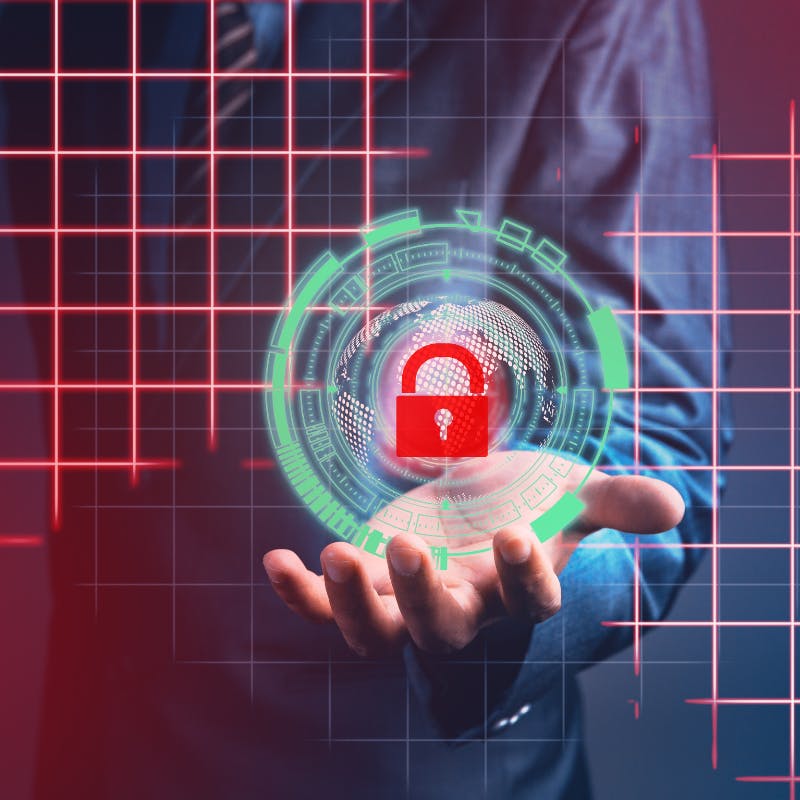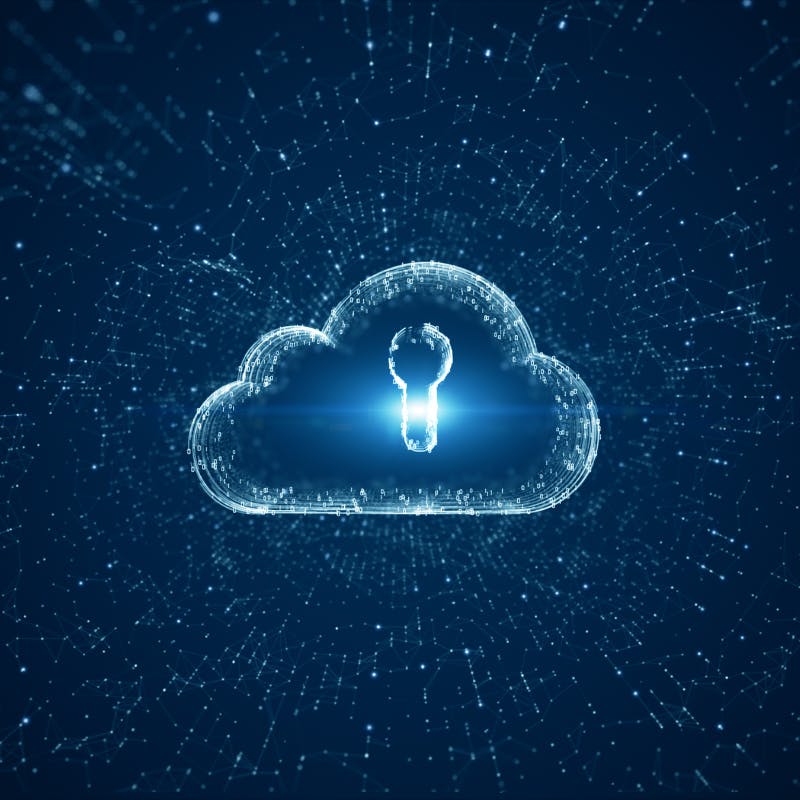The sensitive nature of mental health data makes it extremely attractive to cybercriminals - and means that every breach has a substantial cost attached to it. Healthcare companies face costs of up to $10 million per breach, due to the high value of their data - which fetches up to $1,000 per record.
The cost of breach detection, response and recovery can be expansive - not to mention the cost of a forensic investigation, legal consultations, and regulatory fines. When Cerebral, Inc. encountered a breach impacting 3.1 million patients, the FTC (Federal Trade Commission) slapped the company with a whopping $7 million fine. The cause of the breach? An inadvertent leak due to the use of tracking pixels that shared data with third-party advertisers like Meta and Google.
Any breach may also lead to higher cybersecurity insurance premiums, and reputational damage - all of which impact the bottom line.
In other words - prevention is better than cure. That is why legislation like the Health Insurance Portability and Accountability Act (HIPAA) have become essential. The primary goal is to protect and secure individuals' sensitive health information while ensuring that it can still be used to provide high-quality healthcare.
The Cybersecurity Challenges in Mental Health
The mental health sector faces unique cybersecurity challenges due to the sensitive nature of its data, the growing reliance on digital tools, and often limited resources for implementing robust security measures. These challenges require specialised approaches to maintain HIPAA compliance and ensure the safety of patient data. Here’s an expanded look at the key challenges:
1. Teletherapy and Remote Care
The shift to teletherapy during the COVID-19 pandemic marked a transformative moment for mental health care, offering accessibility and convenience to patients worldwide. However, it also introduced significant cybersecurity risks:
- Data Transmission Vulnerabilities: Video calls, instant messaging, and shared documents involve the transmission of electronic Protected Health Information (ePHI) over the internet. Without secure encryption protocols, this data is susceptible to interception by hackers.
- Unsecured Platforms: Many providers, especially smaller practices, turned to non-HIPAA-compliant platforms in the early stages of the pandemic, increasing the risk of data breaches.
- Device Risks: Patients and providers often use personal devices, such as laptops and smartphones, which may not have adequate security measures like antivirus software or firewalls.
- Privacy Concerns: Teletherapy sessions conducted in non-private environments (e.g., at home) can inadvertently expose sensitive information to unauthorised individuals.
To mitigate these risks, mental health providers need to adopt HIPAA-compliant teletherapy platforms with built-in encryption and conduct training for secure virtual interactions.
2. Small Practices and Limited Resources
Mental health services are often provided by independent practitioners or small clinics, which face distinct challenges in cybersecurity:
- Budget Constraints: Advanced cybersecurity measures like firewalls, intrusion detection systems, or regular audits can be cost-prohibitive for smaller practices.
- Lack of IT Expertise: Without dedicated IT staff, providers may struggle to implement and maintain security protocols, relying instead on outdated or ineffective solutions.
- Perception of Low Risk: Small practices might assume they’re unlikely targets for cyberattacks, leading to a false sense of security. In reality, cybercriminals often target smaller organisations because they tend to have weaker defences.
The solution lies in scalable, cost-effective cybersecurity services tailored for small practices, such as cloud-based security solutions and managed service providers.
3. Complex Data Management
Mental health providers deal with a wide range of sensitive data, including:
- Patient intake forms containing personal identifiers.
- Detailed treatment plans and session notes.
- Medication records and diagnostic information.
- Insurance claims and billing information.
This data is often stored across multiple systems and locations:
- On-premises Systems: Local servers or computers in the office may be vulnerable to physical theft or outdated software vulnerabilities.
- Cloud Storage: While cloud storage offers flexibility, it introduces risks if the provider isn’t HIPAA-compliant or lacks encryption protocols.
- Personal Devices: Employees may access or store ePHI on personal devices, increasing the risk of unauthorised access or accidental exposure.
The complexity of managing data across these environments requires robust policies, such as ensuring all devices have encryption and using secure, centralised storage systems to minimise fragmentation.
4. Evolving Cyber Threats
Healthcare data, including mental health records, is highly valuable on the black market, making it a prime target for cybercriminals. Mental health providers face several types of evolving threats:
- Phishing Attacks: These attacks use deceptive emails or messages to trick employees into revealing login credentials or clicking malicious links. Without proper training, even seasoned staff can fall victim to these schemes.
- Ransomware: Ransomware attacks encrypt critical data and demand payment for its release. These attacks can bring mental health practices to a standstill, delaying care and damaging patient trust.
- Insider Threats: Malicious or negligent employees can compromise sensitive data, whether intentionally or inadvertently (e.g., by falling for a phishing attack).
- Zero-Day Exploits: Cybercriminals exploit software vulnerabilities before they’re patched, gaining access to systems unnoticed.
Proactive measures, such as regular software updates, endpoint detection, and employee cybersecurity training, are essential to defend against these threats.
Notable Cybersecurity Breaches in Mental Health
These challenges have already led to several notable breaches in the mental health space. A multi-factor authentication attack on the Los Angeles Department of Mental Health (DMH) exposed sensitive information after employee accounts were exposed, leading to unauthorized access to Social Security numbers and medical records.
Further abroad, a ransomware attack against the NHS Dumfries and Galloway saw a significant volume of patients’ data leaked on the dark web after the company refused to give into ransom demands. In Finland, a major hack on the Vastaamo psychotherapy center’s systems led to extortion attempts against 33,000 patients.
But the most famous case of all was the CareSource breach. In 2023, the MOVEit file transfer system used by CareSource was exploited by the CL0P ransomware group. This attack affected hundreds of organizations worldwide, including CareSource, which is a nonprofit health plan.
The breach resulted in the exposure of sensitive personal information of CareSource members, including their names, addresses, Social Security numbers, dates of birth, medical conditions, diagnoses, medications, and more of over 3.1 million people.
CareSource took steps to mitigate the damage, including patching the vulnerability and notifying affected members. They also offered complimentary credit monitoring and identity theft protection services to those whose data may have been compromised.
The breach has led to several class-action lawsuits against CareSource, alleging inadequate cybersecurity measures and negligence.
Cybersecurity Best Practices for HIPAA Compliance
In the mental health sector, safeguarding Protected Health Information (PHI) isn’t just a regulatory requirement under HIPAA—it’s a critical component of maintaining trust and delivering quality care. A proactive, layered approach to HIPAA compliance is the best defense:
1. Conduct Regular Risk Assessments
A fundamental aspect of HIPAA's Security Rule is the requirement for organisations to perform regular risk assessments. These assessments offer a clear understanding of the vulnerabilities within your organisation, the potential impacts of various threats, and the necessary steps to mitigate those risks effectively. To meet this requirement, it is essential to conduct detailed risk analyses that examine all aspects of the organisation, including hardware, software, policies, and employee practices. Based on these analyses, tailored recommendations can be provided to mental health practices, ensuring that the solutions are cost-effective and aligned with the unique needs of smaller organisations or independent providers. Furthermore, documenting the results of these risk assessments is crucial, as it serves as proof of compliance during audits.
2. Implement Strong Access Controls
Limiting access to Electronic Protected Health Information (ePHI) is critical for reducing the risk of data breaches. Access controls are designed to ensure that only authorised personnel are permitted to view, modify, or transfer sensitive information. This can be achieved by implementing Role-Based Access Control (RBAC), where permissions are assigned based on job roles. For example, a receptionist might be granted access to scheduling data but not to therapy notes. Additionally, multi-factor authentication (MFA) provides an extra layer of security by requiring users to verify their identity through multiple forms of authentication, even if their login credentials are compromised. Setting up audit trails and continuous monitoring allows for the tracking of access to ePHI and helps flag any anomalies, such as attempts to access data outside of standard hours.
3. Encrypt Data at Rest and in Transit
Encryption serves as a critical line of defence by ensuring that data remains unreadable to unauthorised users, even if it is intercepted or accessed without permission. This is especially important for mental health providers who rely on teletherapy platforms and cloud storage. Implementing end-to-end encryption for all communications—including video calls, text messages, and document sharing on teletherapy platforms—is essential. In addition, data stored in cloud environments must be protected with encryption protocols, and organisations should verify that their cloud service providers are HIPAA-compliant. Furthermore, encrypting data at rest on servers, mobile devices, and external storage is crucial in protecting against theft or unauthorised access.
4. Develop Comprehensive Policies and Training
Human error remains one of the most significant causes of data breaches in healthcare, so it is essential to ensure that employees are well-trained in how to handle ePHI securely. Customised cybersecurity training programmes, specifically designed for mental health professionals, should focus on real-world scenarios they are likely to encounter. These programmes should include guidance on recognising phishing attempts, handling patient data securely, and understanding their role in protecting sensitive information. In addition, creating easy-to-follow cybersecurity policies that clearly outline responsibilities, acceptable use of technology, and the procedures for reporting potential threats is crucial. To maintain vigilance, organisations should provide annual training refreshers to keep employees updated on the latest threats and best practices.
5. Prepare for Incident Response
No system is completely immune to breaches, even with robust cybersecurity measures in place. Therefore, developing a well-defined and tested incident response plan is essential for ensuring that an organisation can respond swiftly to minimise the damage in the event of a breach. The plan should be tailored to mental health organisations, addressing specific scenarios such as ransomware attacks or phishing breaches. Conducting tabletop exercises is an effective way to test the plan and ensure that employees are familiar with their roles during an incident. Additionally, organisations should be prepared to assist with breach investigations, ensuring accurate reporting to the Department of Health and Human Services (HHS) and affected individuals in compliance with HIPAA's breach notification requirements.
Tools and Technologies for HIPAA Compliance
The landscape of cybersecurity is constantly evolving, and staying compliant with HIPAA requires organisations to adopt the right tools and technologies to safeguard sensitive patient data. Here’s an in-depth look at essential technologies for achieving and maintaining HIPAA compliance.
1. Secure Teletherapy Platforms
As teletherapy becomes a key component of mental health care, ensuring the platform used meets HIPAA standards is critical. Not all teletherapy platforms provide the necessary security features to protect patient information. When selecting a teletherapy platform, it is essential to choose one with built-in end-to-end encryption, which ensures that communications between the provider and patient remain private and secure. Additionally, the platform must provide secure storage for session recordings and other sensitive data, preventing unauthorised access or potential breaches. Furthermore, the platform should include Business Associate Agreements (BAAs) to ensure that the service provider is legally obligated to comply with HIPAA standards. It is also crucial that the platform offers role-based access controls, allowing providers to limit access to sensitive information based on the role of the user. Lastly, the platform should seamlessly integrate with existing Electronic Health Record (EHR) systems to ensure that all patient data remains organised and compliant with HIPAA regulations.
2. EHR Systems with Integrated Security
Modern EHR systems specifically designed for mental health practices often come with built-in features that are essential for compliance with HIPAA regulations. These features typically include role-based access controls that restrict data visibility to only those who need it. For instance, a therapist should only have access to the treatment notes of their patients, while an administrative assistant should have access only to scheduling and billing information. Additionally, these systems often include real-time tracking of access logs, which allows organisations to monitor and audit who is accessing ePHI at any given time. This tracking ensures that any unauthorized access can be quickly identified and mitigated. Compliance dashboards within these systems further help by monitoring and reporting on security metrics, ensuring that the organisation is staying compliant and can generate reports for audits when required.
3. Data Loss Prevention (DLP) Tools
Data Loss Prevention (DLP) tools are an important line of defence against unauthorised sharing or accidental leaks of ePHI. These tools actively monitor and control the movement of data across your organisation’s network, preventing sensitive information from being shared without proper authorization. DLP solutions can restrict the ability to copy ePHI to external devices such as USB drives or email accounts, ensuring that sensitive data cannot be transferred inappropriately. Additionally, DLP tools are capable of monitoring unusual data movements, such as large file transfers or access from unfamiliar locations, which could indicate a breach or a potential vulnerability. These tools are essential for preventing data leaks and ensuring that patient information remains protected.
4. Cloud Security Services
Storing ePHI in the cloud offers flexibility and scalability, but it also requires robust security measures to meet HIPAA standards. When selecting a cloud service provider for storing sensitive data, it is critical to partner with a HIPAA-compliant provider that offers encryption to protect data both at rest and in transit. Encryption ensures that even if the data is intercepted or accessed by an unauthorized party, it remains unreadable. Furthermore, a reliable cloud provider should regularly conduct vulnerability assessments to identify and address potential security weaknesses. In addition to these precautions, the provider should be willing to sign a Business Associate Agreement (BAA), which legally binds them to comply with HIPAA regulations. It is also important to implement tools for real-time cloud monitoring, which can detect and respond to potential security events as they happen, ensuring a rapid response to any security breaches.
5. Security Information and Event Management (SIEM) Systems
Security Information and Event Management (SIEM) systems offer comprehensive monitoring by aggregating and analysing security data from across the organisation. These systems help detect potential threats in real time by using behavioural analytics, which can identify unusual activity patterns that might indicate a cyberattack or data breach. SIEM systems centralise incident logging, making it easier to track and investigate security events. This centralisation is especially useful during audits or breach investigations, as it provides a clear, organised record of all security-related activities. Furthermore, SIEM systems can automate responses to common threats, such as isolating infected devices or blocking suspicious IP addresses, which can help contain potential breaches before they escalate. These systems are essential for maintaining a proactive security posture and quickly addressing any threats to ePHI.
Final Thoughts
Cybersecurity for mental health organisations requires more than just meeting HIPAA standards—it demands a proactive, layered approach that protects sensitive patient information while enabling providers to focus on care. By adopting best practices, leveraging advanced tools, and partnering with cybersecurity experts, mental health providers can ensure compliance, mitigate risks, and maintain the trust of their patients.
If you need help evaluating or improving HIPAA-compliance in your mental health organization, book a call with us today. Our cybersecurity compliance experts can assist with:
- HIPAA compliance assessments
- Risk assessments
- Risk analysis
- Vulnerability assessments
- Penetration testing
Site2 has years of experience helping healthcare organizations (as well as other industries) better understand, evaluate and implement compliant cybersecurity measures in their business. We’re standing by to help you improve data security.
Recent Posts in News

Comprehensive Overview of CMMC Registered Practitioner Organization (RPO) and Registered Practitioner (RP)

Medium-Assurance Certificate in Cybersecurity and Cybersecurity Compliance

Understanding the Role of Defense Contractors and Their Cybersecurity Requirements

What is the Defense Industrial Base Cybersecurity Program?

